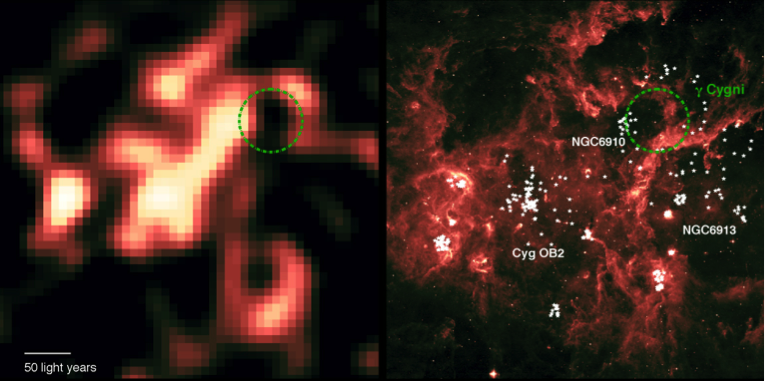Gamma-ray emission from particle acceleration in supernova remnants and superbubbles
MeV regime observations provide unique information on the physical processes and the chemical/isotope composition of supernova remnants (SNRs). Both compact sources (pulsar and their wind nebulae) and extended supernova shells can be detected in continuum MeV emission. In the young supernova remnant Cassiopeia A (Cas A), a flux of about 3 × 10-6 cm-2 s-1 MeV-1 at 1 MeV is expected in models of injection of leptonic cosmic rays. A detection of the flux would constrain the cosmic-ray injection models. Supernova remnants interacting with molecular clouds (e.g. IC 443) are the brightest Fermi SNRs. Apart from emission from pion decay, a relativistic bremsstrahlung component may also contribute. MeV observations are unique probes to constrain the leptonic contribution and also to study the SNR interaction with dense clumps in a molecular cloud. The collective action of fast stellar winds of young massive stars and supernovae in OB associations are producing superbubbles – large caverns filled with hot gas and enhanced cosmic ray population. Broad line features with estimated fluxes of about 3 × 10-5 cm-2 s-1 MeV-1 were reported by the COMPTEL team (in 1997) in their study of the diffuse emission from the central galactic radian. Nuclear-interaction line emission from superbubbles are expected with a flux of about 3 × 10-7 cm-2 s-1 MeV-1 at 4 – 6 MeV for distant superbubbles, while the extended local bubbles (loops) might be observable.
Required instrument performances:
 Left: Gamma-ray excess (10 – 100 GeV) detected with Fermi/LAT in the Cygnus superbubble. Right: Infrared image (8 microns) from the MSX satellite showing ridges of dense gas that mark the boundaries of the superbubble. White crosses show the positions of massive stars. The gamma-ray emission reveals cosmic rays freshly accelerated in the superbublle. Credit: I. A. Grenier (Fermi LAT/AIM/U. Paris Diderot/CEA) and L. Tibaldo (Fermi LAT/U. Padova/INFN). |
| Performance parameter | Goal value | Remarks and notes |
|
Field-of-view (FWHM, deg) |
||
|
Angular resolution (FWHM, deg) |
a few arcmin | To study molecular clumps |
|
Spectral resolution (ΔE/E @ Energy) |
About 10% | Narrow line widths are about 100 keV |
|
Line sensitivity (@ Energy) (cm-2.s-1, 3σ, 1 Ms) |
3×10-5 cm-2 s-1 |
|
|
Continuum sensitivity (cm-2 s-1 keV-1, ΔE=E, 3σ, 1 Ms) |
3×10-6 cm-2 s-1 MeV-1 @ 1 MeV |
|
| Timing performances |
No |
|
|
Polarimetric capability (Minimum Polarization Fraction for a Crab source in 1 Ms) |
No |
|
| Real-time data? | no |
 AstroMeV
AstroMeV